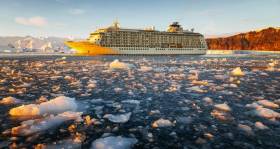Displaying items by tag: Ross Sea
Mega Yacht Sets New Record For Most Southerly Navigation
#Offshore - A giant private yacht has broken the record for the most southerly navigation, reaching 78°43.997’ S and 163°41.421’ W at the Bay of Whales in Antarctica’s Ross Sea.
The World, a 43,188-ton yacht with 272 crew and carrying 145 residents and guests, recorded the new polar record – the furthest any vessel has ever sailed – at 10.41 ship’s time (New Zealand time) on Saturday 28 January.
The mega yacht, which circumnavigates the globe every two to three years, is currently undertaking a 22-day expedition of the Ross Sea, including 12 days in Antarctica assisted by EYOS Expeditions led by Rob McCallum.
Commenting on the new record, The World’s Captain Dag H Saevik said: “When we designed this remarkable expedition to the Ross Sea with our residents, that has taken two years of preparation, we hoped that with the right conditions we might be able to reach the ice shelf and set a new record for the most southerly navigation.
“This voyage of more than 5,000 nautical miles has taken us to the most isolated area of the world. Explorers like Amundsen, Shackleton and Scott have always been driven to explore the furthest boundaries. However, not many people get to travel to the end of the earth from their own home.”
Few vessels have made the journey to this remote part of Antarctica. In February last year, the polar expedition vessel Akademik Shokalskiy reported reaching 78°43.971’S.























